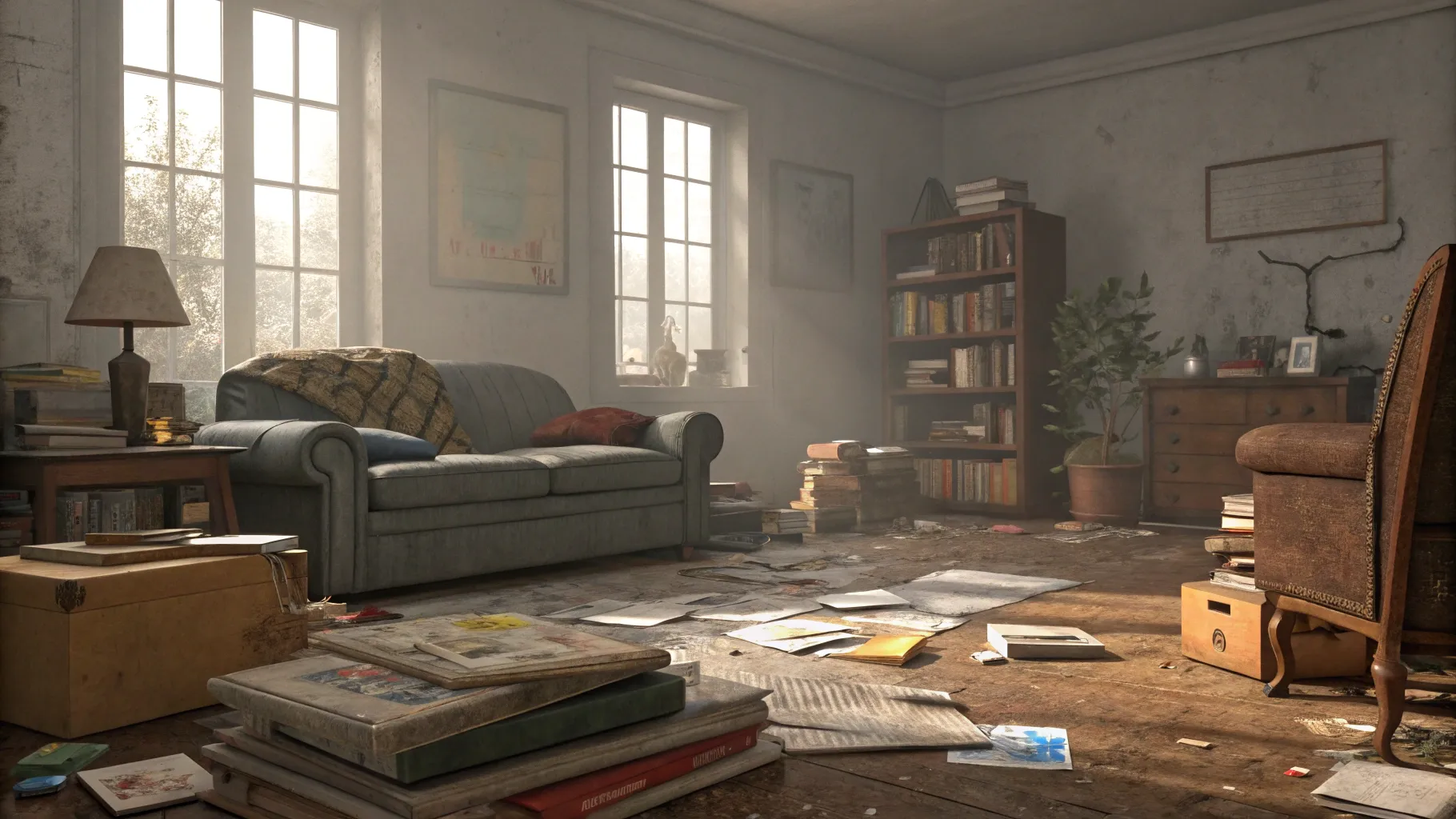5 Surprising Ways Your Home Might Be Draining Your Energy

This post may contain affiliate links. As an Amazon Associate, I earn from qualifying purchases.
Walking into my house and feeling that immediate sense of “blah” used to be a daily occurrence. I’d look around at the clutter, the unfinished projects, and the general disarray and think, “I just need to try harder.” But after listening to The Minimal Mom‘s insights, I’ve realized something important: maybe it’s not my lack of motivation that’s the problem—maybe my environment is actually zapping my energy.
As a mom juggling multiple responsibilities, I’ve come to understand that our homes should support us, not drain us. Yet many of us live in spaces that do exactly the opposite. Here’s what I’ve learned about why your house might be making you feel tired and discouraged, and some simple fixes that can break this cycle.
Your Home Reflects Your Season, Not Your Character
The first revelation that hit me hard: clutter isn’t a character flaw. Like many women, I’ve used the state of my home to judge my success as a mother and homemaker. This connection is deeply ingrained but fundamentally untrue.
What if instead we viewed our home’s current state simply as evidence of the season we’ve just weathered? When life gets “lifey” (as The Minimal Mom aptly puts it), tasks pile up not because we’re lazy or disorganized, but because we’re directing our limited emotional bandwidth to more pressing matters.
The next time you catch yourself thinking, “I’m so behind” or “I’m so lazy” when looking at your cluttered countertop, try shifting that narrative. Your messy home isn’t an indictment of your character—it’s just showing you’ve been through a challenging time.
Creating a Haven for Rest and Recharge
Many of our homes aren’t set up to help us rest and recharge. The Danish concept of “hygge” (pronounced hoo-ga) offers a solution—creating warm atmospheres that celebrate simple pleasures. Research shows that 90% of people most satisfied with their homes say their space helps them feel relaxed.
You don’t need to overhaul your entire house to create this feeling. Start small with these approaches:
- Create one designated cozy corner with a comfortable chair, soft blanket, and perhaps a candle
- Clear just one flat surface completely, then add back only one calming item
- Incorporate natural textures through woven baskets, wooden trays, or cotton blankets
These small changes can transform a space from demanding to inviting. The goal isn’t perfection but creating areas that whisper, “You can rest here.”
Taming the Silent To-Do List
Unfinished projects are energy vampires. That half-painted wall, the pile of items to return, the broken lamp you plan to fix—these things create what The Minimal Mom calls a “silent to-do list” that constantly shouts at you.
If you find yourself procrastinating or escaping into Netflix instead of tackling these tasks, there’s nothing wrong with you. Your brain is doing exactly what it’s designed to do—seeking the path of least resistance when faced with overwhelming options.
The solution? Give yourself permission to let go of unfinished projects. If you’re not ready to part with them completely, try these approaches:
- Put a deadline on each project with a sticky note: “Finish by June 15th or donate”
- Consolidate all unfinished projects to one dedicated area
- Create one “action bin” for all household tasks requiring attention
By containing these energy drains, you’ll create more mental space for rest and creativity.
Optimizing Your Home’s Atmosphere
Lighting dramatically affects how we feel in our spaces. Interior designers often start consultations by simply opening curtains and blinds. The Journal of Environmental Psychology has found that proper lighting enhances mood and brain function.
Many of us are essentially “solar powered”—energized on sunny days and sluggish on gloomy ones. When natural light isn’t available, create layers of warm lighting through lamps and candles rather than harsh overhead lights.
Air quality matters too. As “A Monk’s Guide to a Clean House and Mind” states, “Regardless of how much you clean things on the surface, if the air around you is stale, your mind will also feel this way.” Opening windows, even briefly in cold weather, can refresh your space and your mindset.
Making Special Things Special Again
When everything’s special, nothing’s special. Many of us display so many items that our brain can’t focus on any of them. The result? Even our most treasured possessions become visual noise.
I’ve noticed in well-designed spaces that special items are given room to breathe. By clearing out the clutter around meaningful objects, we allow them to become true focal points that can trigger happy memories and positive feelings.
This principle extends to floor space too. Items left on the floor create subconscious unease—our brains are wired to scan for threats, particularly at ground level. Simply clearing floor space can create an immediate sense of calm.
Creating a home that energizes rather than drains you doesn’t require a complete renovation or perfect organization. It starts with understanding how your environment affects your mindset and making intentional adjustments. By curating your space for restfulness and reconnection, you can transform your home into a true haven—a place where you can exhale, let your guard down, and feel secure, no matter what kind of day you’ve had.
HTML Content






